1. Introduction:- Until the amendment made by the Finance (No.2) Act, 2009, the gifts were taxed only on receipt of sum of money; i.e., cash or cheque or bank draft in excess of Rs.50,000 in a year by any individual or HUF. Now, gifts of immovable and certain movable properties will also be subject to tax if these are received without consideration or at inadequate consideration. In section 56(2), clause (vii) has been inserted w.e.f. 1-10-2009. The earlier provision was brought in with a view to curb bogus capital-building and money laundering through receipt of gifts. Though Gift Tax Act has been abolished way back w.e.f. 1st October, 1998, it has again come back in another form and find place in the Income-tax Act.
2. Taxing gifts whether justified?
The basic footing of taxing ‘gifts’ as ‘income’ is itself illogical, the gift essentially being a capital receipt in the hands of the recipient. The person making the gift is also supposed to make gift out of accumulation from the income which has suffered tax in his hands one way or the other.
The CBDT had issued a Circular No. 158 dated 27-12-1974, reported in 98 ITR (St.) 97, clarifying that receipts which are of casual and non-recurring nature will be liable to income tax only if they can properly be characterized as “income” either in its general connotation or within the extended meaning given to the term by the Income-tax Act. Hence gifts of purely personal nature will not be chargeable to income tax, except when they can be regarded as an addition to the salary or when they arise from the exercise of a profession or vocation.
The view taken by the Board was consistent with jurisprudence but it seems that in zeal for higher revenue, the principles laid down even by the Central Board of Direct Taxes are being given a go bye.
3. Hitherto provisions relating to gifts
Up to September, 1998 any amount received without consideration was taxable as gift under Gift Tax Act. From October, 1998 to August, 2004 any amount received as gift or without consideration no tax was leviable either for giver or receiver.
Thereafter, in section 56(2), a clause (v) was inserted vide Finance (No.2) Act, 2004 to provide that a sum of money exceeding Rs. 25,000 received by an individual or HUF from any person after 1-9-2004 without consideration will be deemed to be income. In this provision amount was chargeable only if a single receipt was more than Rs. 25,000. Hence, gifts became legalized as before this it was always debatable and issue before A.O. was that whether particular amount is gift or unexplained credit by the assessee in the form of gift. Such sums of money received as gifts, other than those in circumstances covered in exceptions in section 56(2), are to be treated as income from other sources. Such sum will not be treated as income from other sources if such receipt falls in those exceptions.
Circumstances and amounts not chargeable to tax are receipt of sum of money or any property from any relative, or receipt on occasion of the marriage or under a Will or by way of inheritance or in contemplation of death or from a local authority or from educational, medical or charitable institution. The term “relative” as defined includes spouse, brother, sister, brother or sister of spouse, brother or sister of either of the parents, any lineal ascendant or descendant of the individual or of the spouse and spouse of any of the persons mentioned above.
Above provision was further amended by introduction of a new clause (vi) in section 56(2) w.e.f. 1-4-2006 to provide that if aggregate amount received during the year is more than Rs. 50,000 the same will be chargeable to tax. Other conditions remained the same as were provided in clause (v).
In short, the provisions relating to tax on such receipts have travelled as under:
| Period | Taxability |
| Up to 30-9-1998 | Liable for tax as gift under the Gift Tax Act in the hands of the donor if amount of gift exceeded Rs. 30,000 in a year |
| 1-10-1998 to 31-8-2004 | No tax on such sum |
| 1-9-2004 to 31-3-2006 | Taxable u/s 56(2)(v) as income but only sum of money if the same exceeds Rs. 25,000 from each person |
| 1-4-2006 to 30-9-2009 | Taxable u/s 56(2)(vi) as income but only sum of money if same exceeded in aggregate Rs. 50,000 in a year in the hands of the recipient from all donors |
| 1-10-2009 onwards | Taxable Receipt of sum of Money, Immovable property as well as certain specified movable property if the amount exceeds aggregating Rs.50,000 in case of each of such category of assets |
4. Widening of scope of section 56(2) through Amendment by the Finance (No. 2) Act, 2009
a) Hitherto clauses used to provide only for taxability of “sum of money received”. Accordingly, receipt of immovable and movable properties (other than “sum of money”) were not covered under the above provisions and, therefore, the department felt it to be a source of avoidance of tax by receipt of gifts in the form of properties. Therefore, in order to further provide taxability of certain property received by an individual or HUF, clause (vii) has been introduced in section 56(2) of the Act w.e.f. 1-10-2009 to provide taxability of benefit received by an assessee in the form of immovable property or certain movable property.
b) The recent amendment, retains the existing provision of taxing receipt of sum of money, exceptions and limit, but seeks to extend the scope of this taxing measure to gift of (1) immovable property land or building or both, (2) shares and securities (3) jewellery (4) archeological collections (5) drawings (6) paintings (7) sculptures and (8) any work of art and seeks to tax them on the basis of their Fair Market Value (FMV) as on the date of gift. It will further cover in its ambit the purchase of immovable property from any body as also other specified movable assets at an inadequate consideration. The impact of the amended provision is discussed hereinafter.
c) Applicable to Individuals and HUFs : It may be noted that the provisions of section 56(2) apply to the receipts of immovable property and specified movable assets in the hands of Individuals and HUFs. The section does not apply in case such assets are received by a partnership firm, AOP, company, or any other entity other than Individuals and HUFs.
5. Purchase of immovable property
Where an individual or HUF receives any immovable property resulting in benefit exceeding Rs. 50,000 in a year, it would be chargeable to tax as income. The value ‘assessed’ or ‘assessable’ by the stamp duty valuation authority will be considered for the purposes of determining value of such immovable property. Immovable property for this purpose would mean land or building or both.
As per the wordings of the section all transactions of purchase of immovable as well as specified properties would be covered under the section and, therefore, the provision would authorize the A.O. to raise issue in respect of every transaction of purchase of the specified property. In respect of immovable properties the A.O. has also been authorized to make reference to Valuation Officer. Accordingly, this would become a source of causing harassment to purchasers even in case of normal purchase transactions.
Stamp duty value as is assessed or assessable by any authority or Central Government or State Government for the purpose of stamp duty is to be adopted. It is doubtful whether basis of valuation for the purpose of stamp duty has been notified by all the State Governments in respect of all the properties, including agriculture land etc. In case basis for valuation has not been notified for the purpose of stamp duty, the value taken would only be value as is mentioned in the documents registered or the value as would have been adopted by concerned authorities for the purpose of stamp duty. In the cases where documents have not been executed or registered, there are likely to be dispute in determination of assessable value in view of positive or negative aspects of a property.
Corresponding provision of section 50C applicable to certain transferors provides for taxability of difference in stamp duty value and actual consideration received by the seller for the purpose of capital gain. Hence, with the amendment of section 56(2), such difference would be chargeable to tax in the case of seller (other than those carrying on business in immovable property) u/s 50C and same amount will also be chargeable to tax in the hands of buyer u/s 56(2); resulting in taxation of the same amount in the hands of both the persons.
After 1st October, 2009, there will be no significance of successfully negotiating a purchase deal for property (which may be less than the value assessed or assessable for the purpose of stamp duty or fair market value determined by the Department’s valuation cell), because the taxman will be there to share nearly one-third of the savings. A tax-payer in the higher taxable income bracket would have to shell out tax @ 30.9%. While gifts in kind were expected to be trapped in the tax net, ever since monetary gifts came to be taxed as income since 1st September, 2004, what concerns the tax-payers and tax experts is the callous provision to place purchase consideration of properties both immovable and movable, under the scanner of fair market value (FMV), the determination of which can be highly subjective and discretionary. The amended provisions will increase litigation and harassment for the tax-payers.
6. Amendment of section 50C vis-a-vis decision in K.P. Varghese case
It may be noted that w.e.f. 1.10.2009, the provisions of taxing capital gains u/s 50C will be applicable even in case a sale deed or transfer deed or an Agreement for Sale is not lodged for registration with the stamp duty authorities. The section has been amended that in such cases the value “assessable” will be considered as the full value of consideration.
The existing provisions of section 50C have been under challenge in various High Courts. Both sections 50C and 56(2) charge tax on deemed basis and without any evidence with the Department of actual transaction at the higher value. Such provisions are unjustified and unreasonable in view of the decision of the Apex Court in K.P. Varghese vs. ITO (1981) 131 ITR 597 (SC) wherein it was held that unless it can be shown by the Department that in fact the assessee has received higher consideration than recorded in the instrument of transfer, a higher value cannot be deemed. The burden of proving and satisfying the condition was on the Revenue. The Apex Court examined the then prevailing section 52(2) which provided for taxing capital gain on the basis of fair market value enacted by Finance Act, 1964, which eventually was omitted by the Finance Act, 1987 w.e.f. 1-4-1988.
Similarly, Chapter-XXA introduced by the Taxation Laws (Amendment) Act, 1972 to counter evasion of tax through understatement of the value of immovable properties in transfer deeds based on fair market value of the property as on date of transfer was omitted in 1986 as it had generated considerable litigation and harassment. Again Chapter XXC for presumptive purchase of immovable property based on fair market value of the property introduced in 1986 was omitted by the Finance Act, 2002. The Memorandum explaining the provisions of the Finance Bill, 2002 stated that these provisions were causing procedural delays and hardships for tax-payers. It was accepted that it was not a tax-payer friendly measure.
However, by forgetting the hardships in the past, the Legislature in its wisdom has thought it fit to again enact deeming provisions for taxation of income on basis of fair market value concept and on the basis of valuation for the purpose of stamp duty.
7. Anomaly in determination of cost of acquisition
Notwithstanding that difference in stamp duty value in case of immovable property and fair market value in case of other property and the actual consideration would be chargeable to tax under section 56(2) of the Act, there is no provision to add this difference which has already suffered tax, in the cost of acquisition for the purpose of determining capital gain as and when such property is sold. Accordingly, in the interest of justice, the provisions of section 49 of the Income-tax Act also needs to be amended to provide for cost of acquisition at the same value which shall be adopted for the purpose of section 56(2) of the Act.
8. Transfer of certain movable property
8.1 Scope broadened
Apart from sum of money, the other movable property, which has been brought into the purview of section 56(2) are –
a) shares and securities,
b) jewellery,
c) archaeological collections,
d) drawings,
e) paintings,
f) sculptures; or
g) any work of art.
Accordingly, benefit received in relation to these assets only will be chargeable to tax u/s 56(2)(vii). Fortunately other assets e.g. motor cars, laptops, electronic items, furniture, air tickets, yacht, aeroplane, silver/gold utensils etc. have been kept out of the tax purview.
Fair market value : Benefit in respect of movable will be calculated on the basis of the fair market value (in short ‘FMV’) of the said items of property. In case the movable property has been received without any consideration, the full amount of FMV shall be taken as income if it exceeds Rs. 50,000 in a year. However, in case of acquiring such property at inadequate consideration, the benefit will be calculated on the basis of difference in the consideration paid and the fair market value (in short ‘FMV’) of such property. Rules for determination of fair market value will be prescribed by the CBDT.
8.2 Determining FMV for archaeological collections, drawings, paintings, jewellery etc.
In regard to the specified movable properties specified in the section, valuation is to be made as per the Rules to be prescribed. It, however, appears to be quite difficult to determine the value in respect of assets like archaeological collections, drawings, paintings, sculptures or work of art. Accordingly, it would also result in difficulty in determination of FMV and would lead to litigation apart from causing harassment even in cases of genuine purchases.
In the market there are cases of distress sales, where the seller in need of money forgoes the best expected price which movable property like paintings, drawings, etc. could fetch on getting a proper buyer and where the buyer at hand does not miss the opportunity of buying such property at low price. Further, in case of paintings, etc. which are age old (prior to 1-4-1981), there will obviously be lot of problems in ascertaining the fair market value as also cost of the asset as on 1-4-1981 for the purposes of computing capital gains.
It will be interesting to understand and examine how the tax rules will lay down a logical basis for valuing items such as paintings, sculptures and works of art, the valuation of which has baffled even the most veteran of experts. Just because one has been fortunate to bargain a good price for such items of movable property, the taxman may spoil the party using his powers u/s 56(2)(vii).
It is the general practice to give Mementos or presents to business associates, dignitaries, close relatives as a matter of goodwill gesture on various occasions. As per the normal practice when Prime Minister or Ministers or even Senior Executives goes to any other country or even to attend any function, inauguration etc. in any institution, chamber of commerce or business house, they are given presents in the form of drawings, paintings, etc., in such cases aggregate value of gifts received during the year would normally be more than Rs. 50,000/-. Therefore, the same will become chargeable to tax in the hands of all such recipients.
Fair market value determination will be prescribed later. However it leaves wide scope for taxation authorities to determine the value of each item mentioned in the list. If any such item has been purchased from a trader in course of his normal trade like purchase of jewellery from a jewellery showroom, nowhere in the amendment it is mentioned that such purchases shall be excluded if these are being purchased from a trader or manufacturer. Even purchase from an auction house is not excluded, though it is a recognized fact that the highest bidder gets the asset in such auctions. Therefore it is desirable that the purchases made in auctions or from a regular businessman should be kept outside the purview of the section.
8.3 Concept of fair market value is unfair, ambiguous, arbitrary and revenue sided
The gift of these newly added properties is to be taxed not at their cost, declared value or actual value but at the fair market value as on the date of gift or transfer. The fair market value in almost all cases will be more than the cost or actual value of these properties in the hands of the owner. To the extent of this difference there will be taxation of deemed gift in the hands of the recipient as his income under the head income from other sources.
Fair market value is a matter of opinion and is not a matter of fact. Fair market value is a subjective concept whereas cost and actual value in the hands of the donor is a matter of fact. No two valuers ever agree on the fair market value of any property. Thus, the new provisions will not only lead to unfair taxation of a deemed gift but will also introduce uncertainties in the taxation of the gift and transfer of the said properties for alleged inadequate consideration. This provision is bound to result in lot of litigation. This provision based on fair market value involves subjective considerations and discretion in the hands of taxing authorities, its implementation will be difficult and involve enormous social cost.
8.4 Transfer of shares and securities
In case of transfer of shares and securities on private transaction basis, there can always be dispute regarding determination of fair market value. Many times transfer of shares can also be with the intention to transfer in the management or even effectively transfer of some immovable property held by the company. In such cases there would be litigation in order to determine the fair market value of such shares, even though rules may be prescribed by the Government.
What will be the position in case of shares given to employees under Employee Stock Option Plan (ESOP) Scheme. Whether it would be liable for tax as perk u/s 17(2) under the head salary or under section 56(2)(vii). It may be noted that section 56(2)(vii) does not exclude shares received by an employee in pursuance of ESOP. Thus the present situation will lead to double taxation. Therefore an exclusion needs to be provided in section 56(2)(vii).
9. Some anomalies and practical Issues :
a) Transfer of sum of money or other assets to HUF
It is a question for consideration what would be the position when individual transfers the money or property to HUF or vice versa. The definition of term “relative” would not cover HUF for the purpose of assessment of any individual. In case of HUF no exemption has been provided for receipt of money from its members also. Whether such relation is to be interpreted by the relation of Karta or all members of Hindu Undivided Family including all female members, still remains a question. Provisions of section 64(2) of the Act provides for taxability of income arising from the property transferred to HUF in the hands of individual. In spite of the fact that the full amount might become chargeable in the hands of HUF, income arising therefrom will have to be clubbed and taxed in the hands of individual who has transferred such sum of money. Hence this aspect requires clarification so that proper interpretation can be done. However if any Member of HUF gets any amount from the HUF it is exempt u/s 10(2).
b) Receipt from Private Trust by the beneficiary
Exemption has been provided for receipt of money from charitable institution. No exemption, however, has been provided for money received from private trust by the beneficiary. In case of private trust, the money held by the trust already belongs to the beneficiaries and same is held by the trustees for their benefit and, therefore, when money or property is transferred from private trust to the individual beneficiaries, there should be no question of taxability thereon.
c) Receipt from Central/State Government
The above exclusions include gift received from recognized public trust or local authority but does not include gifts or specified assets received at inadequate consideration from the State or Central Government. Therefore, if any money or specified property is received from the State or Central Government it will be included in the income of the recipient individual or HUF if the value or the difference, as the case may be, exceeds Rs. 50,000.
d) Interest u/s 234C
In provisions of section 234C of the Income- tax Act, interest is not chargeable in case of capital gain if installment of advance tax is paid with the payment falling due after receipt of income. Similar exemption from payment of interest needs to be provided in respect of deemed income chargeable to tax pursuant to receipt of sum of money or immovable property or other specified movable assets without any consideration or at inadequate consideration.
e) Transfer through will
As per the provisions property received under a Will is exempt from tax. On the basis of above exemption, there is still a possibility of avoiding tax in respect of some property for which the buyer / recipient may already be in the possession of the property and the Testator (i.e., person making the Will) may make the Will in favour of such person. Based on Will legal title may be acquired on death of the testator. In this case, provisions of section 56(2) will not be attracted.
f) Interest free loan etc.
The section covers any sum of money received without any consideration which can be interpreted in various manners, as nowhere in the section the word gift has been mentioned. If any amount has been given free of interest and the same is without any other consideration, whether it will come within the purview of the section or not requires clarification. In a recent Judgment of Income Tax Appellate Tribunal, Mumbai Bench in the case of Chandrakant H.Shah vs. ITO [ITA No. 3966/MUM/2008 dated 12-1-2009 it has been held that a Loan transaction has to be treated as a loan transaction only and it should be examined in the light of provisions of section 68 and not under the provisions of section 56(2)(v) hence it should not be treated as income of the assessee. A clarification to this problem may sort out unnecessary litigation.
g) Perks to employees
If an employer company is dealing in the items covered for the purpose of the said section and such company provides products to his employee at concessional rate then again there would be double taxation.
h) Receipt of specified property as a result of family settlement / arbitration etc.
In case any property (covered in the list) is received under family settlement or as a result of arbitration or mutual compromise, what would be the position of taxability u/s 56(2)(vii). It needs to be clarified. Many a times the arbitrations are as good as part of court proceedings. Likewise some times a decree is passed by the Court containing terms of mutual settlement as per the joint petition of the litigating parties in a suit. These situations need to be urgently considered for exclusion from the purview of section 56(2)(vii).
i) Free gifts with sale
Sometime the movable assets covered in section 56(2)(vii) might be provided free along with other products sold by a trader, whether the fair market value of the items received without consideration in such a case will be falling in the mischief of the said section, will again be a disputable question. The sellers may have to redesign their promotional strategies to overcome the difficulties their customer might face particularly where the value of free gifts is considerable.
j) Floodgates for many controversies
A new law opens floodgates for many controversies ending up in litigations which are finally settled in ITAT, High Courts and the Supreme Court by a long drawn process. This also entails huge costs for the assessee as also the Department. Hence before enactment of any law by the Legislature, it should take care of all possible implications of the new provisions being inserted into the Income-tax Act, so that such long drawn litigation(s) can be avoided. It may be worthwhile to highlight that many of the decisions which go in favour of the assessee, are reversed/nullified by the subsequent enactment; and the entire efforts/exercise of pondering over a legal question both by assessee and the Courts goes in vain.
10. Conclusion
The Parliament has legislated one of the most complicating taxing provisions. The present amendments will not only usher in more litigation and harassment of tax-payers, but it is apprehended that these will also pave the way for distressing nuisance and ill practices like corruption. Determination of FMV of the specified movable properties such as jewellery, archeological collections, drawings, paintings, sculptures and work of art, will be subject to valuation which will differ from valuer to valuer. Taxation on deemed basis and fair market value concept is not a tax payers friendly measure, when such taxation measures introduced in the past have failed the legal scrutiny by the Apex Court and eventually dropped. The objection is to the manner in which the value of the gift is to be determined. It may be worthwhile to note that contract between two parties for transferring any asset or right in asset, as per the Indian Contract Act, 1872 has lost its essence as far as taxation under the Income-tax Law is concerned. The better approach for the legislature may be to take the value of the gifts at their cost or actual value in the hands of the donor or consider revival of the Gift Tax Act. One may remember the introduction of Service Tax with only a few services which later has been increased to over 100 services. Now, we need to watch out, whether Legislature will further widen the ambit of movable properties for the purposes of sec. 56(2) or restrict it to the present amendment.
Narayan Jain, LL.M. and Deepak Jain, LL.M. , Advocates






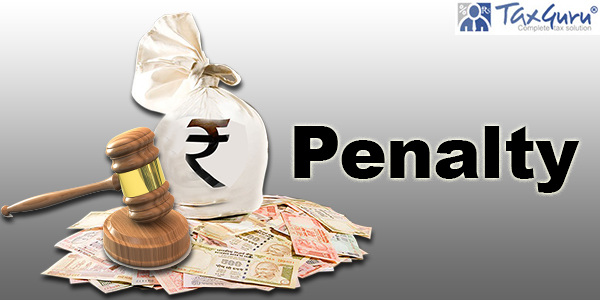







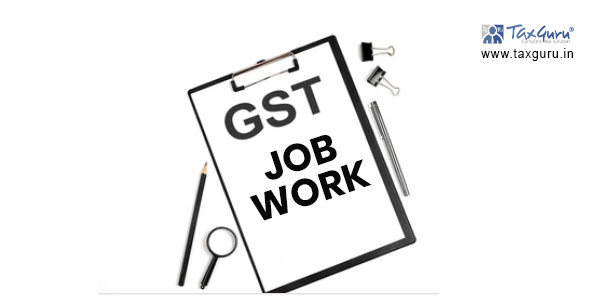

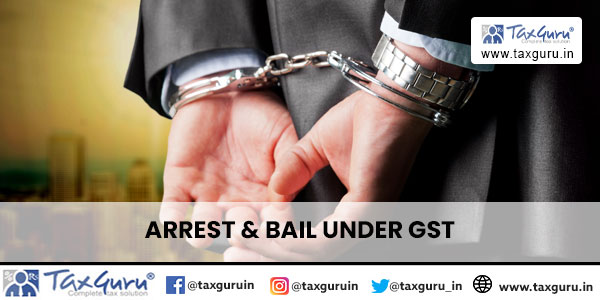
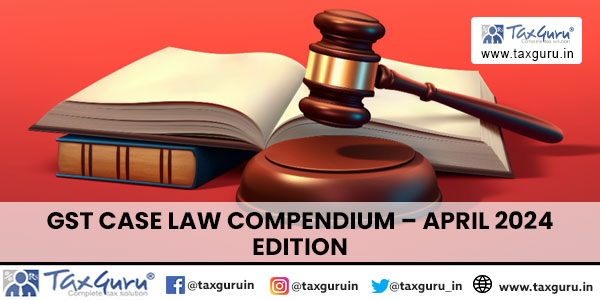

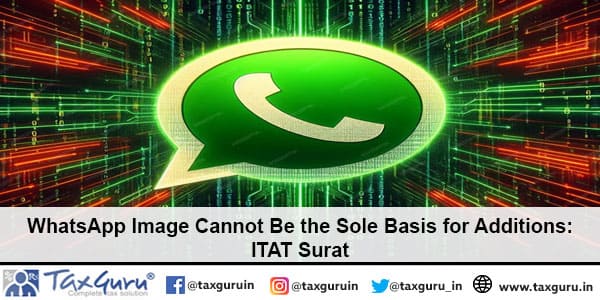
Can a RIICI prop in the name of Pvt Ltd company be gifted. If gifted, what will be the tax implications
The position as regards transfer of immovable property as a settlement between the blood relatives like brothers,sisters,son,daughters,other legal heirs is not clearly brought out.Better to have clear cut clarifications.Taxing should adopt some rationality to spare some thing with the possessor instead of making him a popper out of such received dues in material form.Perhaps he may not have income to pay the due tax on account of factors behind such transfers.Government is for the people.
Hi,
I am taking a sum of 8L from my father to buy a house , as a payment towards the booking amount.
Do I have to show the amount taken as additional Income . Am I liable to pay tax on that under the following scenarios
a) If amount is taken as interest-free loan
b) loan with certain interest
c) Gift
Kindly clarify
I RECEIVED 10 LACS AMOUNT BY CHEQUE FROM MY BROTHER AS GIFT IS IT LIABLE FOR INCOME TAX OR NOT IF YES WHAT AMOUNT OF TAX WILL BE PAID
PLEASE GIVE THE GIFTS RECEIVED FROM RELATIVES BEFORE AND AFTER1.10.2009 IS THERE ANY DIFFERENCE IF RECEIVED BY WAY OF WILL FROM RELATIVE AFTER 1.10.2009
when pvt ltd ltd co having plot of industrial land is being transfered marely by changing the director, then whether it would be taken at market price to know the FMV of shares for income tax purpose or it willtaken as book value? provision is not clear.
tr of property by virtue of transfer of company maerly by changing the director. nothing is clear that whether the property is booked at book value or the difference of book value and market price will be taxed at shareholder hand.
If a private company buy back its own shares u/s 77A of the Companies Act,1956 below the book value.
Whether this section will apply on the company for the difference amount. It is not clear in this section.
Regarding para no 7 – anamoly in cost of acquisition – I thought there was a clause inserted section 49 to provide for the modus operandi to calculate cost of acquisition when such property was being sold….